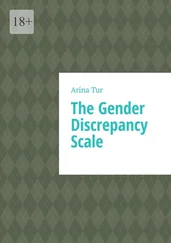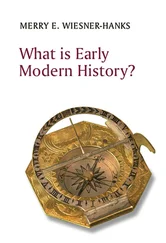8 Begin Reading
9 Bibliography
10 Index
11 End User License Agreement
1 i
2 ii
3 iii
4 iv
5 v
6 vi
7 vii
8 viii
9 ix
10 x
11 1
12 2
13 3
14 4
15 5
16 6
17 7
18 8
19 9
20 10
21 11
22 12
23 13
24 14
25 15
26 16
27 17
28 18
29 19
30 20
31 21
32 22
33 23
34 24
35 25
36 26
37 27
38 28
39 29
40 30
41 31
42 32
43 33
44 34
45 35
46 36
47 37
48 38
49 39
50 40
51 41
52 42
53 43
54 44
55 45
56 46
57 47
58 48
59 49
60 50
61 51
62 52
63 53
64 54
65 55
66 56
67 57
68 58
69 59
70 60
71 61
72 62
73 63
74 64
75 65
76 66
77 67
78 68
79 69
80 70
81 71
82 72
83 73
84 74
85 75
86 76
87 77
88 78
89 79
90 80
91 81
92 82
93 83
94 84
95 85
96 86
97 87
98 88
99 89
100 90
101 91
102 92
103 93
104 94
105 95
106 96
107 97
108 98
109 99
110 100
111 101
112 102
113 103
114 104
115 105
116 106
117 107
118 108
119 109
120 110
121 111
122 112
123 113
124 114
125 115
126 116
127 117
128 118
129 119
130 120
131 121
132 122
133 123
134 124
135 125
136 126
137 127
138 128
139 129
140 130
141 131
142 132
143 133
144 134
145 135
146 136
147 137
148 138
149 139
150 140
151 141
152 142
153 143
154 144
155 145
156 146
157 147
158 148
159 149
160 150
161 151
162 152
163 153
164 154
165 155
166 156
167 157
168 158
169 159
170 160
171 161
172 162
173 163
174 164
175 165
176 166
177 167
178 168
179 169
180 170
181 171
182 172
183 173
184 174
185 175
186 176
187 177
188 178
189 179
190 180
191 181
192 182
193 183
194 184
195 185
196 186
197 187
198 188
199 189
200 190
201 191
202 192
203 193
204 194
205 195
206 196
207 197
208 198
209 199
210 200
211 201
212 202
213 203
214 204
215 205
216 206
217 207
218 208
219 209
220 210
221 211
222 212
223 213
224 214
225 215
226 216
227 217
228 218
229 219
230 220
231 221
232 222
233 223
234 224
235 225
236 226
237 227
238 228
239 229
240 230
241 231
242 232
243 233
244 234
245 235
246 236
247 237
248 238
249 239
250 240
251 241
252 242
253 243
254 244
255 245
256 246
257 247
258 248
259 249
260 250
261 251
262 252
263 253
264 254
265 255
266 256
267 257
268 258
269 259
270 260
271 261
272 262
273 263
274 264
275 265
276 266
277 267
278 268
279 269
280 270
281 271
282 272
283 273
284 274
285 275
286 276
287 277
288 278
289 279
290 280
291 281
292 282
293 283
294 284
295 285
296 286
297 287
298 288
299 289
300 290
2.1 Enea Vico , Nature , 1545–1550
2.2 #NiUnaMenos March in Lima, Peru, 2016
3.1 Venus of Willendorf, c. 23,000 BCE
3.2 Figures on the Manunngul Burial Jar
4.1 Egyptian Women at a Banquet, ca. 1479–1425 BCE
4.2 Sumerian female worshipper, 2600–2500 BCE
5.1 Athenian water jar, ca. 450 BCE
5.2 Female dancer, China, second century BCE
6.1 Sonriente (smiling figure) from the Remojadas culture of Veracruz, Mexico, seventh to eighth century
6.2 Ryújo, handscroll of The Tale of Genji , 1594
7.1 Artemisia Gentileschi, Esther Before Ahasuerus, 1628–1635
7.2 Queen Mother Pendant Mask, Benin, sixteenth century
8.1 Winslow Homer, New England Factory Life “Bell Time,” from Harper’s Weekly , 1868
8.2 José Guadalupe Posada, Broadside with men dancing with men, Mexico City, 1901
8.3 Poster advertising Stearns bicycles, 1896
Each book that I have written has encouraged me to range wider chronologically and geographically from my original home base in early modern Germany, which has meant that I have entered territories in which I know less and less. Fortunately I have found my scholarly colleagues to be uniformly gracious in sharing their expertise, providing assistance and advice, often in the process turning from colleagues to friends. For this book I would like to thank Constantin Fasolt, who asked me to write the first edition, Tessa Harvey, the development editor at Wiley-Blackwell in the 2000s, who encouraged its progress and suggested I write a second edition, and Jennifer Manias, Sophie Bradwell, and Andrew Minton at Wiley-Blackwell, with whom I worked on this third edition. My graduate student Brice Smith combed the library and the web for new materials as I set out to write the second edition; the results of his labors, along with many original sources, can be found on the instructor companion website. My thoughts on the issues discussed here have been influenced over the years by a great many people; my list could go on for pages, but I would particularly like to thank: Barbara Andaya, Judith Bennett, Jodi Bilinkoff, Renate Bridenthal, David Christian, Elizabeth Cohen, Natalie Zemon Davis, Mary Delgado, Lisa DiCaprio, Candice Goucher, Anne Hansen, Scott Hendrix, Evelyn Brooks Higginbotham, Marnie Hughes-Warrington, Grethe Jacobsen, Margaret Jolly, Susan Karant-Nunn, Deirdre Keenan, Gwynne Kennedy, Susan Kingsley Kent, JoAnn McNamara, Teresa Meade, Jeffrey Merrick, Pavla Miller, Laura Mitchell, Susanne Mrozik, Mary Elizabeth Perry, Allyson Poska, Diana Robin, Lyndal Roper, Ulinka Rublack, Anne Schutte, Bonnie Smith, Hilda Smith, Ulrike Strasser, Susan Stuard, Larissa Taylor, Gerhild Scholz Williams, and Heide Wunder.
About the Companion Website
This book is accompanied by an instructor companion website.
www.wiley.com/go/wiesner-hanks/genderinhistory3e
This website includes
Original Sources
Further Readings
The title of this book would have made little sense to me when I chose to be a history major nearly five decades ago. I might perhaps have thought it an analysis of linguistic developments, as gender was something I considered (and bemoaned) largely when learning German nouns. The women’s movement changed that, as it changed so much else. The feminist movement that began in the 1960s – often termed the “second wave” to set it apart from the “first wave” of feminism that began in the nineteenth century – included a wide range of political beliefs, with various groups working for a broad spectrum of goals, one of which was to understand more about the lives of women in the past. This paralleled a similar rise of interest in women’s history that accompanied the first wave of feminism.
Читать дальше












